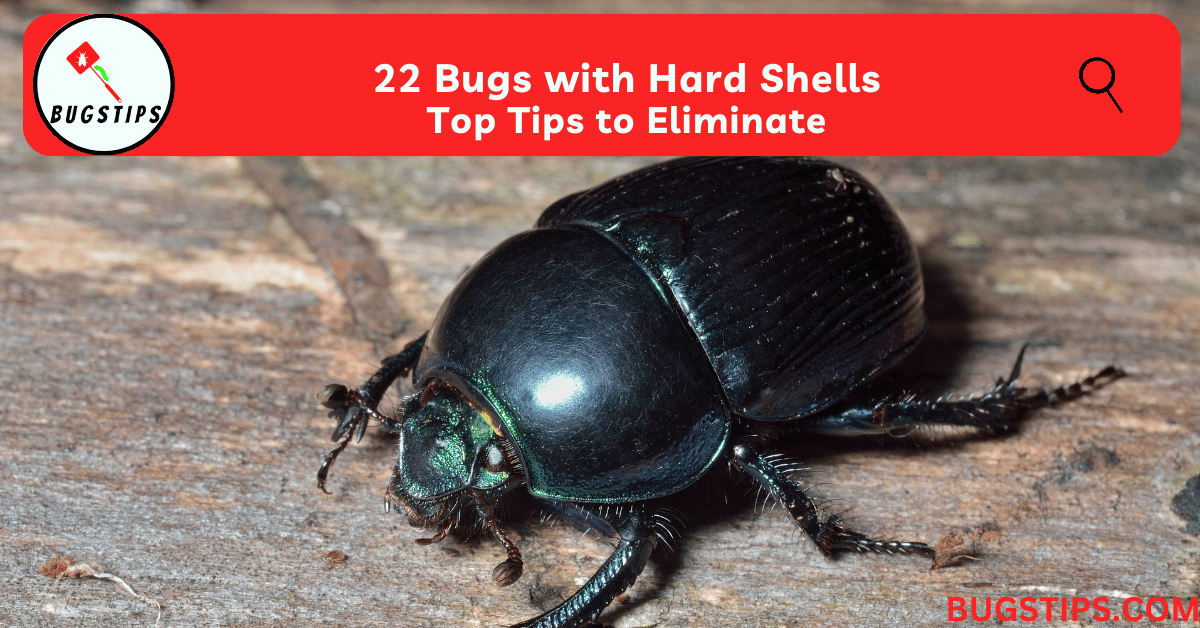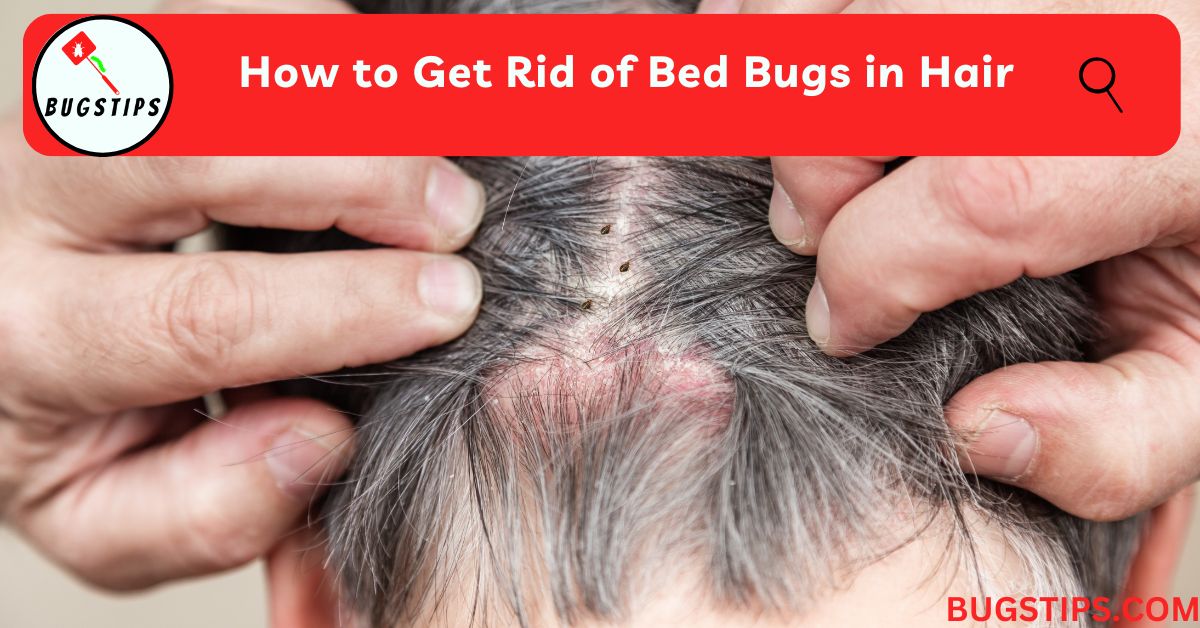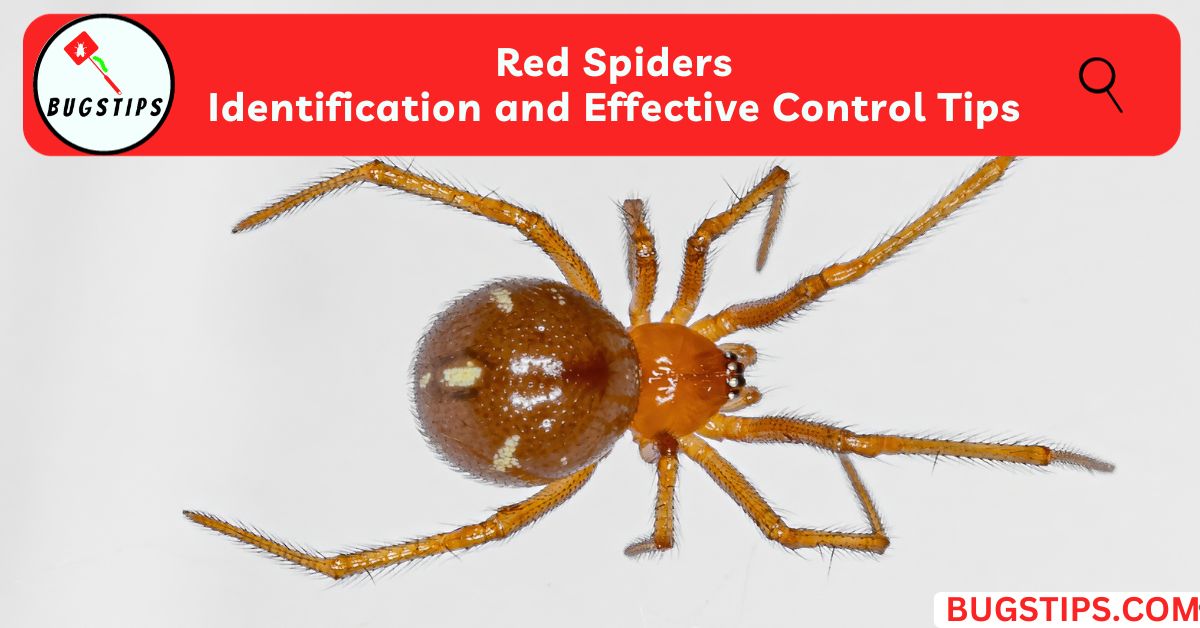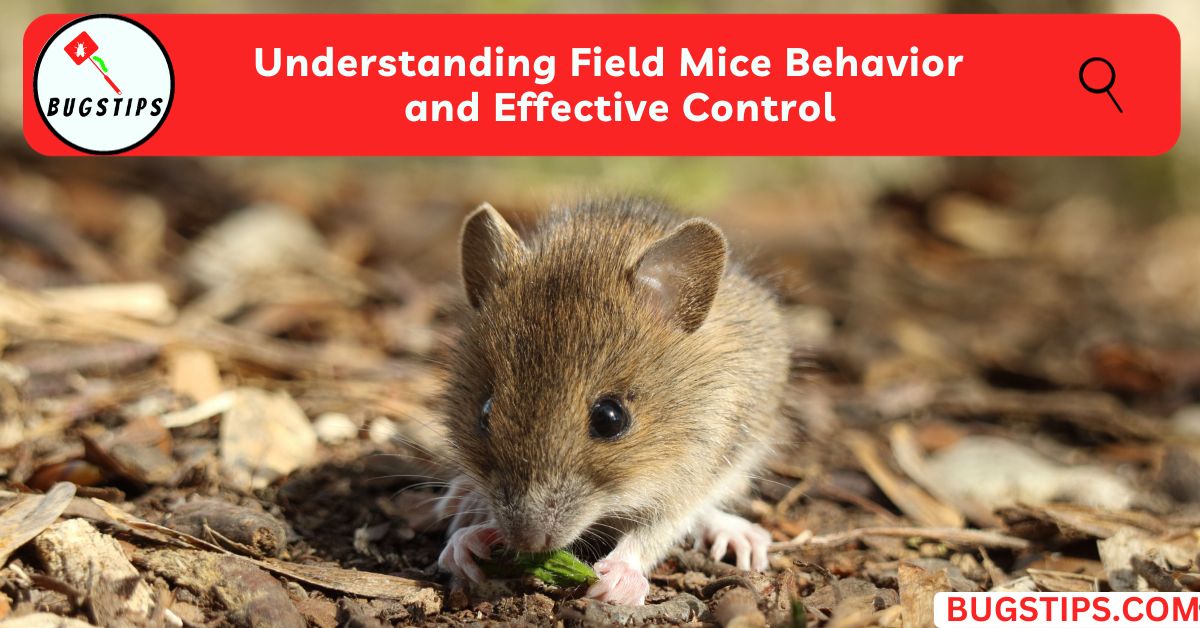This post may contain affiliate links which means as an Amazon Associate, this site may earn a small commission on qualified purchases made through links at no extra cost to you. Learn more on Affiliate Disclosure
Bugs with hard shells are a common sight in both indoor and outdoor environments. These insects are known for their tough, protective exoskeletons, which help them survive and thrive in a variety of habitats.
While some hard shell bugs are harmless and even beneficial, others can cause problems for humans, such as damage to crops, contamination of food stores, or bites and stings.
In this article, we’ll explore types of bugs with hard shells, including the bugs you might encounter inside your home, outdoors, and in other areas. We’ll also discuss natural and chemical methods for controlling hard shell bugs and keeping them at bay.
So if you’re dealing with a pesky infestation and curious about those insects, read on to learn more about bugs with hard shells.
Bugs with Hard Shells Inside the House
Bugs with hard shells can be found in many different environments, and unfortunately, many of these bugs also live inside our homes. These intruders can cause damage to stored food products and sometimes even pose a health risk.
Here we will explore some of the most common hard shell bugs that you may already have in your home.
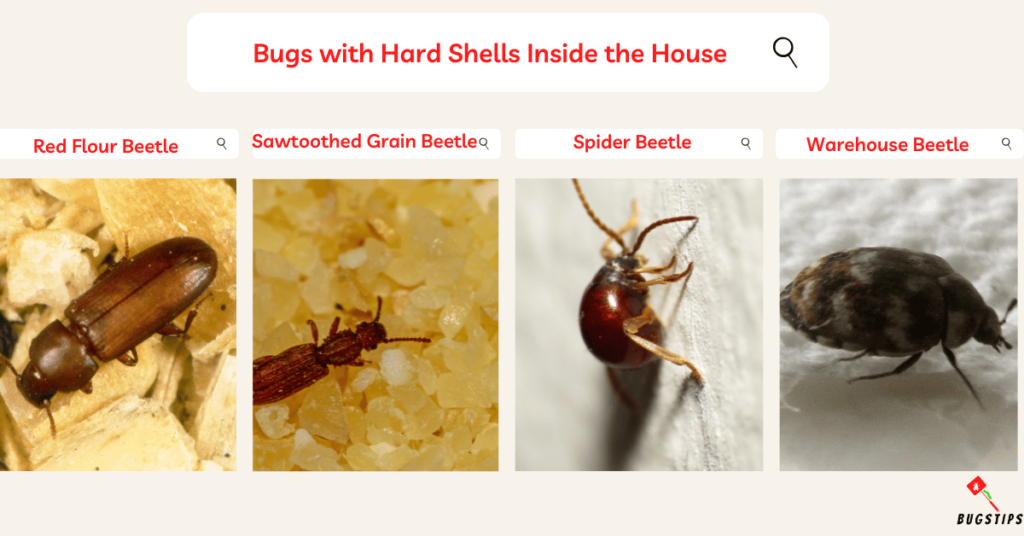
Red Flour Beetle
- The Red Flour Beetle is a common hard shell bug that measures about 3-4 mm (1/8 inch) in length and is usually brown or black in color.
- This beetle is well-known for infesting stored food products, such as flour, cereals, pasta, biscuits, beans, and nuts, causing damage and losses.
- It has a hard outer shell that helps protect it from predators.
- You can distinguish the Red Flour Beetle from similar species by the shape of the club on its antennae, as the last few segments of its antennae increase abruptly in size.
Sawtoothed Grain Beetle
- The Sawtoothed Grain Beetle is another common household pest that targets dry, stored food products.
- It is named for the saw-like projections on the sides of its thorax, which further protect its hard outer shell.
- These small beetles target dry, stored food products, such as flour, cereals, bread, pasta, dried fruits, sugar, and nuts.
- Sawtoothed Grain Beetles can be found in homes in Colorado and various parts of the world, and their infestations can lead to serious losses in stored grains.
- Their presence can provide opportunities for other hard shell pests, such as the Red Flour Beetle, to establish themselves in the same environment.
Spider Beetle
- Spider Beetles earned their name due to their resemblance to small spiders.
- With round bodies and long, slender legs, these beetles are typically 1-5mm in length.
- They can be found in various habitats, including homes and warehouses.
- While most spider beetle species scavenge on dry plant or animal matter, some can also become pests of stored food products.
- Although they can be a nuisance, spider beetles do not bite or sting humans or pets.
Related Article – 10 Long Skinny Black Bugs in House | Effective Guide
Warehouse Beetle
- Warehouse Beetles are a type of hard shell bug that can be found in pantries, closets, and warehouses where food is stored.
- They are closely related to Carpet Beetles and Cabinet Beetles.
- They measure around 1/8 to 3/16 inches in length and are brownish-black with pale yellow-to-off-white hairs on their backs.
- The larvae of Warehouse Beetles are narrow, tapered, and yellowish to dark brown, growing up to 1/4 inch in length.

Drugstore Beetle
- The Drugstore Beetle is a small reddish-brown beetle commonly found in pantries, closets, and warehouses.
- The Drugstore Beetle is a small hard shell bug that measures about 2 to 3.5mm in length and is usually reddish-brown in color.
- It has a pair of three-segmented club antennae and deep pits on its wing covers, giving it a striated appearance.
- While they are attracted to light, Drugstore Beetles primarily infest stored food products and other materials, such as grains, seeds, flour, pet foods, spices, books, manuscripts, leather, wool, and even drugs.
- Their hard outer shell helps protect them from predators and allows them to cause significant damage to stored food products and other materials.
Larder Beetle
- Larder Beetles are commonly found in pantries, larders, and other food storage areas.
- These dark brown, oval-shaped beetles measure about 1/4 to 1/3 inch in length and have a distinctive cream to yellow-colored band across the top of their wing covers, adorned with six dark-colored spots.
- The larvae of Larder Beetles are worm-like, hairy, and reddish to dark brown, with a pair of spines on their tail end that curves backward.
Khapra Beetle
- The Khapra Beetle is a small hard shell bug that is notorious for being one of the most destructive pests of grain products and seeds worldwide.
- These beetles have a hard reddish-brown outer shell that helps protect them from predators.
- They thrive in hot and dry conditions, infesting areas where grain and other potential food sources are stored, such as pantries, malt houses, grain processing plants, and stores of used grain sacks or crates
- Controlling infestations is challenging due to the beetle’s ability to survive without food for long periods, its preference for low-moisture food, and its resistance to many insecticides.
Cigarette Beetles
- Measuring between 1/8 inch (2.0-3.7 mm) and 2-3 millimeters in length, Cigarette Beetles are light to dark brown insects.
- They can be attracted to a wide range of dry goods in your home, including cereal, dried fruit, seeds, flour, and other dried animal products.
- Cigarette beetles can cause damage to stored food products and are often identified by their reddish-brown appearance and small size.
- Signs of infestation include finding small insects crawling around your pantry or discovering holes in stored food products.
Related Article – 15 Tiny Yellow Bugs | A Comprehensive Guide
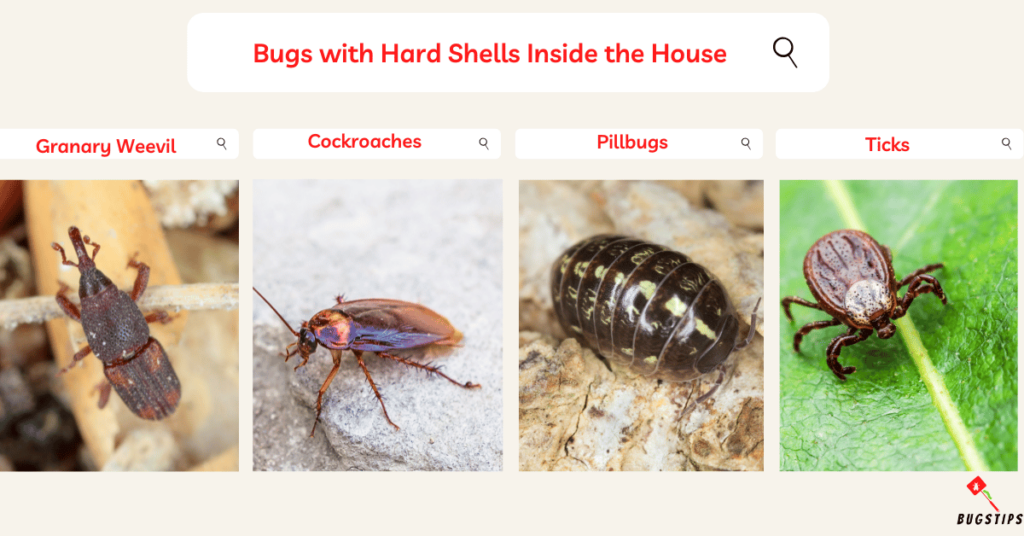
Granary Weevil
- The Granary Weevil is a small dark brown beetle that feeds on cereal grains.
- Measuring about 5mm in length, these weevils have elongated snouts and chewing mouthparts and are unable to fly.
- The larvae of Granary Weevils are small, white, legless grubs with brown head capsules.
- They attack a variety of grains, such as corn, wheat, rice, beans, nuts, and stored cotton.
Cockroaches
- Cockroaches, although not exclusively considered bugs with hard shells, have a protective exoskeleton made of chitin
- This hard shell provides them with some level of protection and makes it challenging for predators to consume them.
- You can easily identify cockroaches. they vary in size depending on the species.
- For example, American cockroaches can range from 1 1/4 to 2 1/8 inches (32-54 mm), while German cockroaches are typically between one-eighth to half an inch in length.
Pillbugs
- Pillbugs, also known as sow bugs, are crustaceans that have adapted to land.
- These oval or slightly elongated isopods have a hard shell made of chitin, similar to the structure of shrimp.
- They are typically around 1/2 inch long and colored slate-gray.
- Pillbugs have seven pairs of legs and segmented bodies that resemble armored plates.
- These land crustaceans are commonly found in damp environments and feed on decaying plant matter.
Related Article – How Many Legs Do Rolly Pollies Have?
Ticks
- Ticks have a hard outer layer called an exoskeleton, composed of chitin.
- This tough and flexible material protects their internal organs and provides support for their bodies.
- Some ticks also have a scutum, a hard plate that covers their back, acting as a shield.
- Ticks can vary in size depending on the species, and they are known for transmitting diseases to humans and animals through their bites.
Flying Bugs with Hard Shell
There are many types of bugs with hard shells, and some of them have the ability to fly. While not all hard-shell bugs can fly, there are several common ones that can.
Here are some of the most common flying bugs with hard shells.

Scarab Beetle
- Scarab beetles are fascinating insects known for their hard exoskeleton and ability to fly.
- They come in various shapes, sizes, and colors.
- These beetles are often associated with ancient Egyptian symbolism and are admired for their beautiful metallic sheen.
- Scarab beetles play important roles in ecosystems as they help in decomposition by feeding on decaying matter.
- They are commonly found in gardens, forests, and grassy areas.
Longhorn Beetle
- Longhorn beetles are named for their long antennae, which can be even longer than their bodies.
- These beetles have a hard exoskeleton that protects them and wings that allow them to fly.
- These have many different colors and patterns, making them quite eye-catching.
- Longhorn beetles are often found in wooded areas, where they feed on tree bark and lay their eggs in tree trunks.
Related Article – 13 Bugs That Look Like Black Sesame Seeds | Full Guide
Stink Bugs
- Stink bugs, as the name suggests, are known for their ability to release a strong odor when threatened.
- These flying insects have a hard shell that helps protect them.
- They come in different colors, including shades of brown and green.
- Stink bugs are often found in gardens and agricultural fields.
- They can become pests by feeding on plants and causing damage.

June Bugs
- June bugs, also known as June beetles, are flying insects that are active during the summer months, particularly in the month of June (hence the name).
- They have a hard exoskeleton that provides them protection.
- June bugs are typically brown or black in color and have stout body.
- These beetles are attracted to lights and can sometimes be found buzzing around porch lights at night.
- They are primarily herbivorous and feed on tree leaves and fruits.
Grasshoppers
- Grasshoppers are agile insects with a hard exoskeleton that allows them to jump and fly.
- They are well-known for their long hind legs and wings, which enable them to cover long distances.
- Grasshoppers are usually green or brown, providing camouflage in grassy areas.
- Some species can cause damage to crops, they are also a valuable food source for many predators.
Ladybugs
- Ladybugs, also known as ladybirds or lady beetles, are small flying insects with hard shells.
- They are beloved for their bright colors and distinctive spots.
- They can be found in various colors, including red, orange, and yellow, with black spots.
- Ladybugs are beneficial to gardens and farmers as they feed on plant pests, such as aphids, helping to prevent their infestation.
- Due to their role in natural pest control, ladybugs are often considered a symbol of good luck and are appreciated by many people.
Bugs with Hard Shells Found Outside
Hard-shelled bugs aren’t just limited to indoor pests. There are many types of these insects that can be found outside, and some of them are even beneficial to the environment.
Let’s take a look at some examples of bugs with hard shells that you might encounter outside.
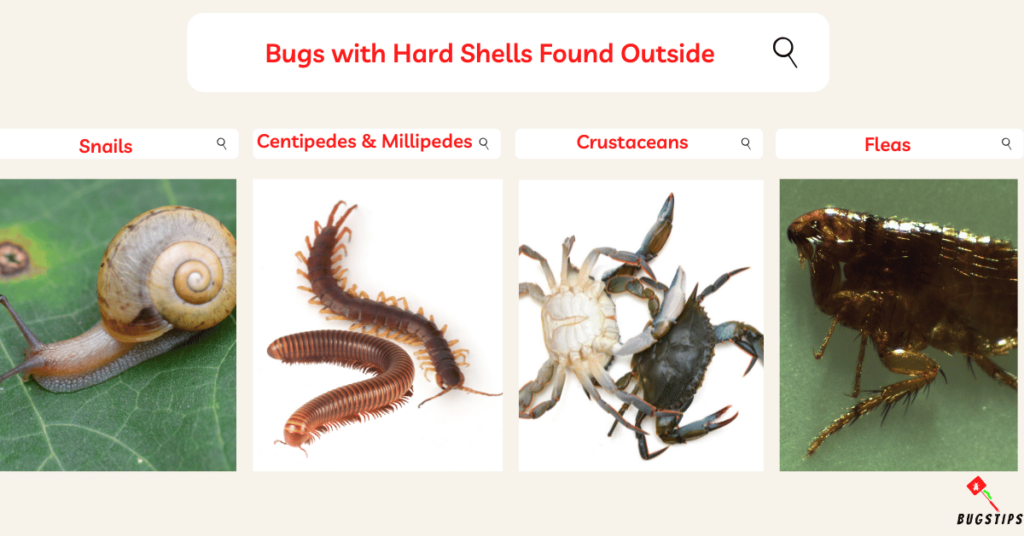
Snails
- Snails are fascinating creatures with hard shells that provide them protection.
- hey belong to the mollusk family and can be found in various environments, including gardens, forests, and wetlands.
- Snails have soft bodies that retreat into their shell when threatened.
- They move slowly, using a muscular foot and a slimy trail to glide along surfaces.
Centipedes
- Centipedes are elongated arthropods with segmented bodies and hard exoskeletons.
- They have numerous pairs of legs, with each segment bearing a pair.
- Centipedes are commonly found in damp environments, such as under logs, rocks, and leaf litter.
- While their appearance may be intimidating, most centipedes are not harmful to humans.
- They are carnivorous predators, using their venomous jaws to capture and subdue their prey, which typically includes insects and small invertebrates.
Related Article – 5 Bugs with Lots of Legs | Ultimate Info Guide
Millipedes
- Millipedes are bugs with a hard outer shell and many legs.
- Despite their name, millipedes do not have a thousand legs; the number varies depending on the species.
- They have a hard outer shell that provides protection.
- Millipedes are primarily detritivores, feeding on decaying organic matter.
- They prefer moist environments and can often be found in soil, leaf litter, and rotting wood.
- While some species may release a defensive fluid when threatened, they are generally harmless to humans.
Crustaceans
- Crustaceans are a diverse group of arthropods that have a hard exoskeleton, jointed appendages, and are typically found in aquatic environments.
- They include crabs, lobsters, shrimp, and crayfish.
- These vary in size, shape, and color, and are well-adapted to their aquatic habitats.
- They play important roles in both marine and freshwater ecosystems, and some species are even capable of living on land, such as land crabs that migrate between the sea and shore.
Related Article – 9 Types of Swimming Pool Bugs You Should Know
Fleas
- Fleas are small, wingless insects with hard bodies and laterally compressed shapes that allow them to move efficiently through fur or feathers.
- While they are commonly associated with pets, fleas can also be found in outdoor environments, particularly areas frequented by animals.
- They have strong legs that enable them to jump long distances.
- Fleas are ectoparasites, feeding on the blood of mammals and birds.
- They can be a nuisance and may transmit diseases, making their control important for both animal and human health.
Related Article – 7 Little Black Bugs on Dogs Not Fleas! Effective Guide
How To Get Rid of Bugs with Hard Shells
If you’re dealing with bugs that have hard shells, there are several natural and chemical methods you can use to eliminate them. Here are some options to consider.
Natural Remedies for Eliminating Hard Shell Bugs
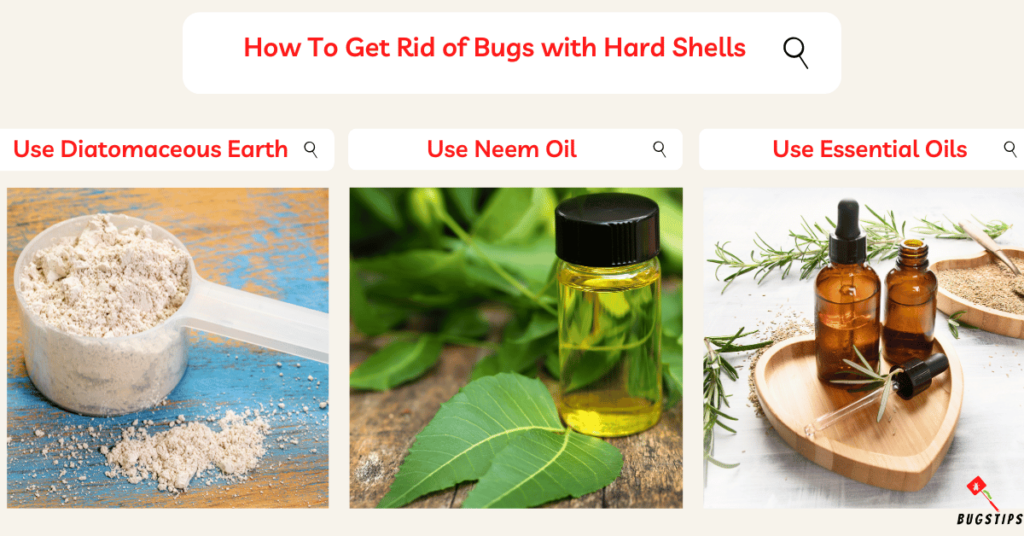
Use Diatomaceous Earth
- Diatomaceous earth is a natural powder made from the fossilized remains of diatoms.
- It can be sprinkled in areas where hard shell bugs are present, such as cracks, crevices, and entry points.
- The tiny particles in diatomaceous earth have sharp edges that can penetrate the exoskeleton of bugs, leading to dehydration and ultimately their demise.
Use Neem Oil
- Neem oil is derived from the neem tree and is known for its insecticidal properties.
- It can be diluted with water and sprayed onto infested areas or directly on bugs with hard shells.
- Neem oil disrupts the insect’s life cycle, repels them, and may even inhibit their feeding and reproduction.
Use Essential Oils
- Certain essential oils, such as peppermint, tea tree, and lavender oil, have insect-repellent properties.
- You can mix a few drops of these oils with water and spray the solution around your home or in areas where bugs are commonly found.
- The strong scent of these oils can deter hard shell bugs from entering or staying in your living spaces.
Related Article – Little Black Bugs in My Car | Expert Removal Guide
Chemical Control Methods
Use Insecticidal Soaps
- Insecticidal soaps are specially formulated products that can effectively control bugs with hard shells.
- These soaps work by suffocating the insects upon contact.
- You can spray insecticidal soap directly onto the bugs or in areas where they reside, following the instructions provided by the product.
Use Pyrethroid Insecticides
- Pyrethroid insecticides are synthetic chemicals that can be used to eliminate hard shell bugs.
- They are available in various forms, such as sprays, dusts, and concentrates.
- Pyrethroids disrupt the nervous system of insects, leading to paralysis and death.
- Read and follow the instructions on the product label and use caution when applying these chemicals.
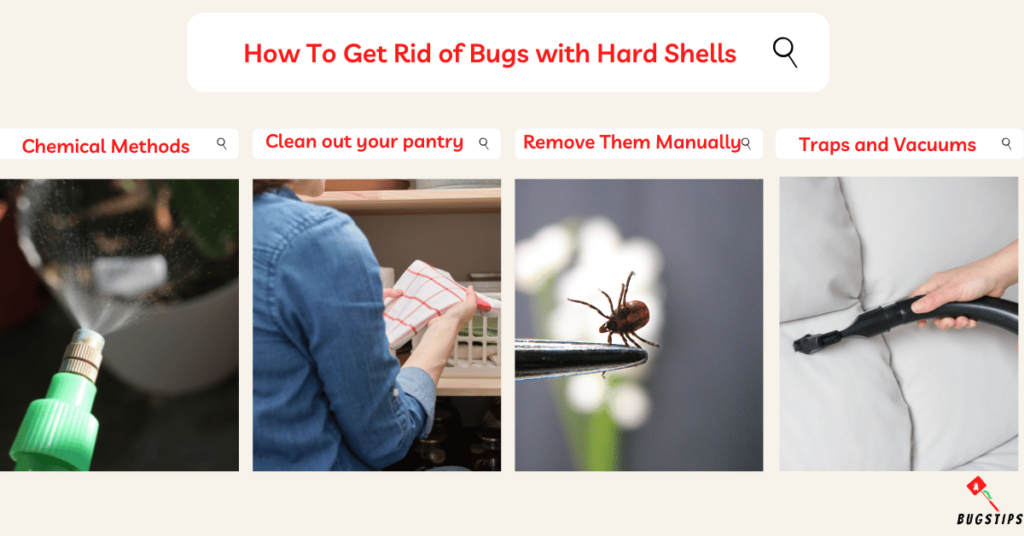
Physical Removal Techniques
Clean out your pantry
- Remove all infested food products and thoroughly clean your pantry shelves, ensuring there are no food residues or crumbs left behind.
- Wipe down the shelves with a solution of water and vinegar to discourage bugs from returning.
Remove Them Manually
- For visible bugs with hard shells, you can manually remove them using gloves or tweezers.
- Place the bugs in a sealed bag or container and dispose of them outside your home.
Traps and Vacuums
- Setting up sticky traps or insect traps can help capture hard shell bugs.
- Place the traps in areas where you have noticed high bug activity.
- Additionally, using a vacuum cleaner with a hose attachment, you can suck up bugs from walls, corners, and cracks.
Final Thoughts
In our homes and outdoors, we encounter many different types of bugs that come in various shapes and sizes. Some are tiny and black, some have wings, and others have many legs or a hard outer shell.
It’s important to accurately identify these bugs so that we can properly deal with them. We hope this article has been helpful in providing information on how to identify and get rid of bugs with hard shells.
By understanding the different natural and chemical methods available for controlling these pests, you can effectively rid your home and garden of them.
With the right knowledge and tools, you can enjoy a bug-free environment and keep your home and garden free of unwanted pests.
FAQs
What are the small black bugs with hard shells in the bathroom?
They could be black carpet beetles, small cockroaches, or drain flies.
What is a bug with a hard shell and many legs?
A millipede is an example of a bug with a hard shell and many legs.
What insect has a shell?
The caddisfly is an insect that has a shell. The shell is a protective case made of materials like pebbles or plant matter, which the larvae construct around themselves.
Do bed bugs have a hard shell?
No, bed bugs do not have a hard shell. They have a flat, oval-shaped body and are reddish-brown in color.
Do butterflies have a hard shell?
No, butterflies do not have a hard shell. They have delicate wings covered in tiny scales.
Do stink bugs have a hard shell?
Yes, stink bugs have a hard shell. Their distinctive shield-shaped bodies are covered in a tough exoskeleton.
What bugs leave shells?
Cicadas are insects that leave shells behind. They have a life cycle where nymphs emerge from the ground, shed their exoskeletons, and transform into adult cicadas.
What bug looks like a popcorn shell?
The cottony maple scale is a bug that can resemble a popcorn shell. It is a small insect covered in a white, cottony or waxy substance.
Resources – (for further reading)
Encyclopedia Britannica – List of beetles
The University of Maryland – Rice and Granary Weevils
DK Find Out – Shells and exoskeletons

